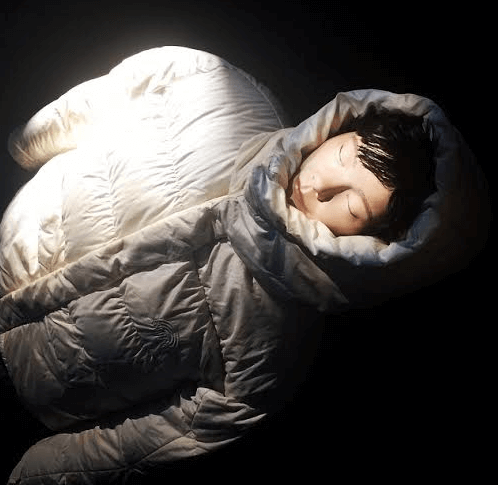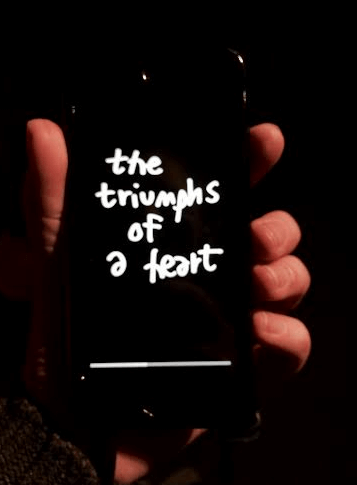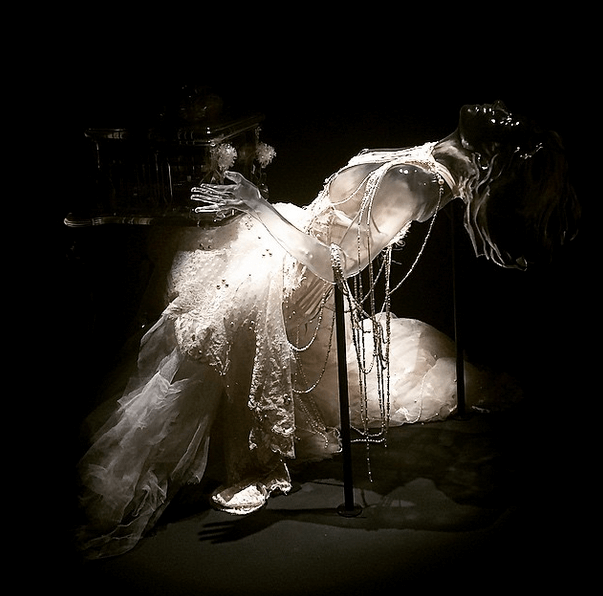Björk at MoMA: On Songlines, Black Lake, and the Baader-Meinhof Phenomenon

All photos by Kristin Iversen
A few weeks ago, my friend told me about an email he’d gotten from a friend of his who was trying to get him to come upstate for a visit. His friend’s email mentioned the possibility of a love connection for my friend, with a woman described as being “very into Björk.” My friend wound up not going, but I couldn’t stop thinking about it. “Hardcore Björk-fandom? Is that a thing? That’s automatically appealing to people?”
“Of course it is!” he said. “It could be, anyway.”
And so, I learned something; I learned that there are people in this world for whom hardcore Björk-fandom is, I guess, a deal-breaker (sorry to use that word!). But also, thanks to, I guess, Baader-Meinhof phenomenon (also known as frequency illusion), once I heard about the Björk-loving woman, I started hearing about Björk everywhere: She had a new album coming out! She had amazing things to say about female “invisibility!” She was dancing with a bunch of my co-workers at The Wick! And she was going to be the subject of a huge retrospective at MoMA: Björk! So, you know, when I got the invite for the press preview, I had to go.
As did, it turned out, literally every other member of the press (with “press” being somewhat loosely defined; apparently James Franco was there, and maybe I saw him, but maybe I didn’t, because a lot of the “press” looks like James Franco these days!) also decided they just had to see Björk, or rather Björk. Mostly, I think, people just wanted to see Björk, who was there! She, along with MoMA PS 1 Director Klaus Biesenbach, introduced the press to the world premiere of her music video for “Black Lake,” which is watched in a small black room with dual screens displaying a music video Björk shot in a volcanic cave in Iceland last summer, and which was, to me, utterly remarkable. Why? Well, this video had the ability to transport me to a head space that felt light years away from my fellow members of the press who surrounded and pressed in on me and whose very presence had me feeling, before the music started, like I was going to literally pass out from the heat and the crowds and the fact that I had to wait on line for 40 minutes before going in.
The waiting, the cramped space, the hordes of people—it was torturous. But the torture ended abruptly when Biesenbach entered the small space accompanied by Björk dressed as… a cactus? That’s one way to describe the outfit which completely covered her face and rose up inches over her head. Personally, it was more evocative of a tumorous growth to me—benign, of course, but organic and coming from the inside of a being. It was like she’d been turned inside out right in front of us. Biesenbach and Björk only stayed for a moment, and then the music started. I guess there’s really no way of knowing, but it felt like we were in Björk’s womb, like she was singing to us from just outside and above our heads, the beat of her heart keeping rhythm. It was beautiful. Worth the wait, even, which is important, I think, because there’s little doubt in my mind that as long as the lines were at the press event, there will be no comparison to what it will actually be like once this exhibit is open to the public. I’m talking Marina Abromovic lines. Tilda Swinton in a box lines. Lines!


<3
Which, of course, is one of the things that MoMA must have considered when they planned this retrospective—considered and then laughed with glee while they devised a way to maximize those lines as much as possible! Why do I say that? Well, because other than the “Black Lake” experience, the show’s big draw is a Volkswagen-sponsored (like, I had to mention this, because VW branding is everywhere) exhibit called “Songlines,” during which visitors walk through a maze of Björk iconography (like, even though I saw Björk in person, I really saw her during this exhibit, because there were statues of her everywhere) while listening to a curated playlist featuring music and a spoken word performance (I couldn’t pay too much attention, but it included lines like “primal as in original, original as in primordial” and so on) corresponds with whatever room you’re in at the time. This type of immersive experience works in the sense that it slows you down—where you might have only spent 30 seconds looking at a statue of Björk in That Swan Dress, the fact that there’s still 3 minutes left in the “Vespertine” area will keep you standing there, admiring the sparkle-bedecked netting stretching down the mannequin’s arms—but in this case it also was a serious distraction at times. Other than the Björk statuary (which predominates), the main objects displayed are Björk’s journals, which would be interesting to read, except that it’s really hard to concentrate on reading when someone is whispering into your ear about how you’re primordial or whatever. It all conspires to create a somewhat disorienting experience, which is interesting in and of itself, because MoMA is an easy enough place to orient yourself in usually. But I don’t know that this type of displacement, the type that leaves you feeling unsettled about where you are because you are solely surrounded by members of the media and Björk-clones, is really what the end-goal was here. And yet: I would like to go back. I’d like to go back and listen to my own headphones, set to a playlist of my own that doesn’t involve anything but “Frosti” playing over and over. (Just kidding; I’d go insane.)
Beyond these two big parts of the retrospective, museum-goers can also watch all of Björk’s videography, which is mind-altering, and wipes away any doubt that Björk deserves a retrospective at an institution like MoMA. Also, there are some of Björk’s instruments displayed throughout the museum’s lobby, and they’re quite beautiful and nice to look at, in silence. What’s most interesting to me about Björk is that this is neither the perfect experience for Björk-lovers or -neophytes, or even those in between. It doesn’t go any deeper into Björk’s life (despite the hagiographic feeling of her journal displays) than any Björk-lover has probably already gone on his or her own, but it’s also not instructive enough to allow a newbie-Björk fan to feel like they’ve learned very much. The purpose of this exhibit was not, Biesenbach said, to be “about” Björk’s music, but rather just be Björk’s music. However, the remarkable aspects of her artistry—her music’s ability, both lyrically and instrumentally, to pierce into your mind and heart and being—are not really present, rather what you see is a celebration of craft and construction—assembly; Björk at MoMA feels more like a celebration of the machine, not the spirit residing within it.
Björk is on view at MoMA from March 8-June 7.
Follow Kristin Iversen on twitter @kmiversen


“Vespertine”
Dress by Alexander McQueen
Music Box by Matthew Barney
You might also like 



















